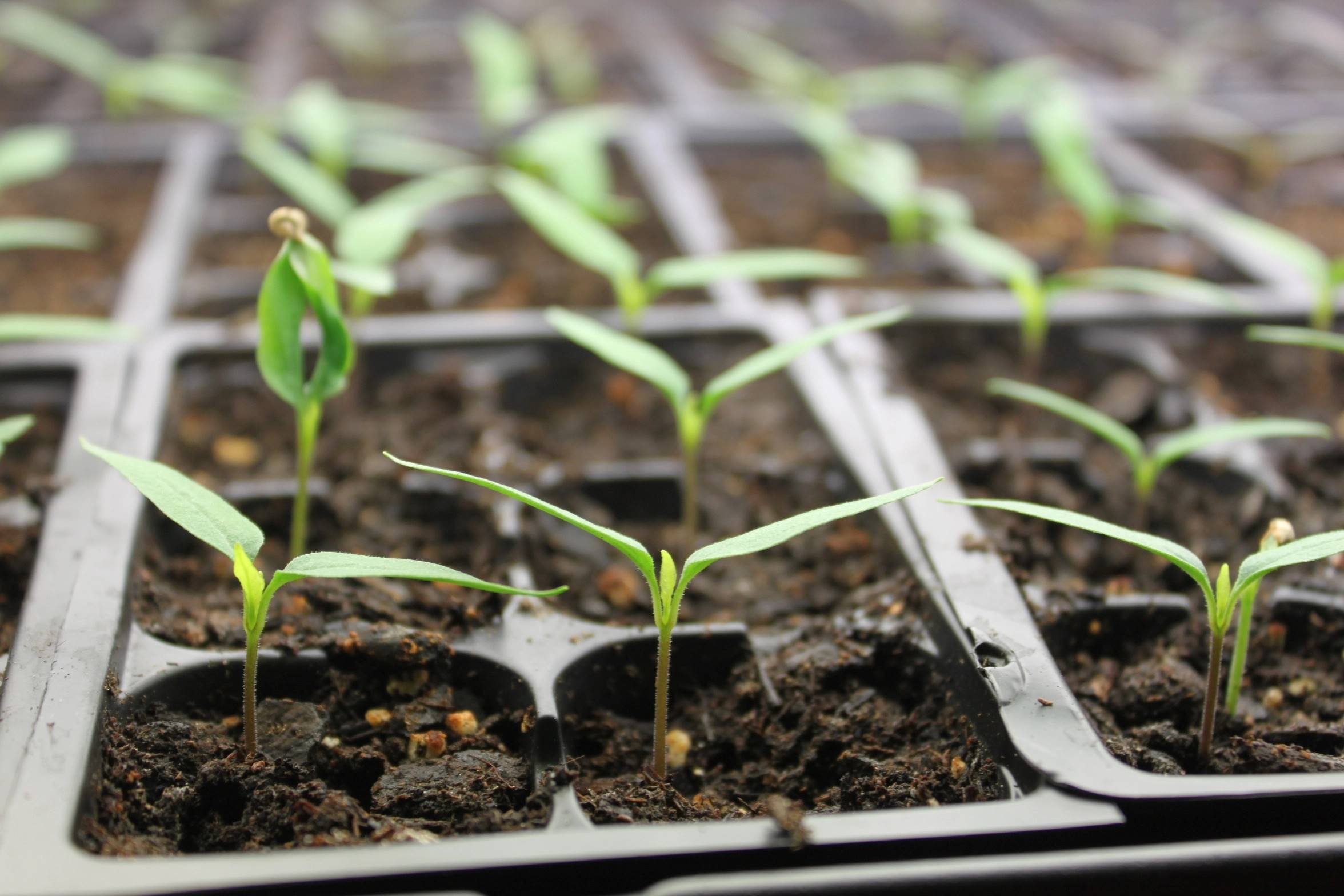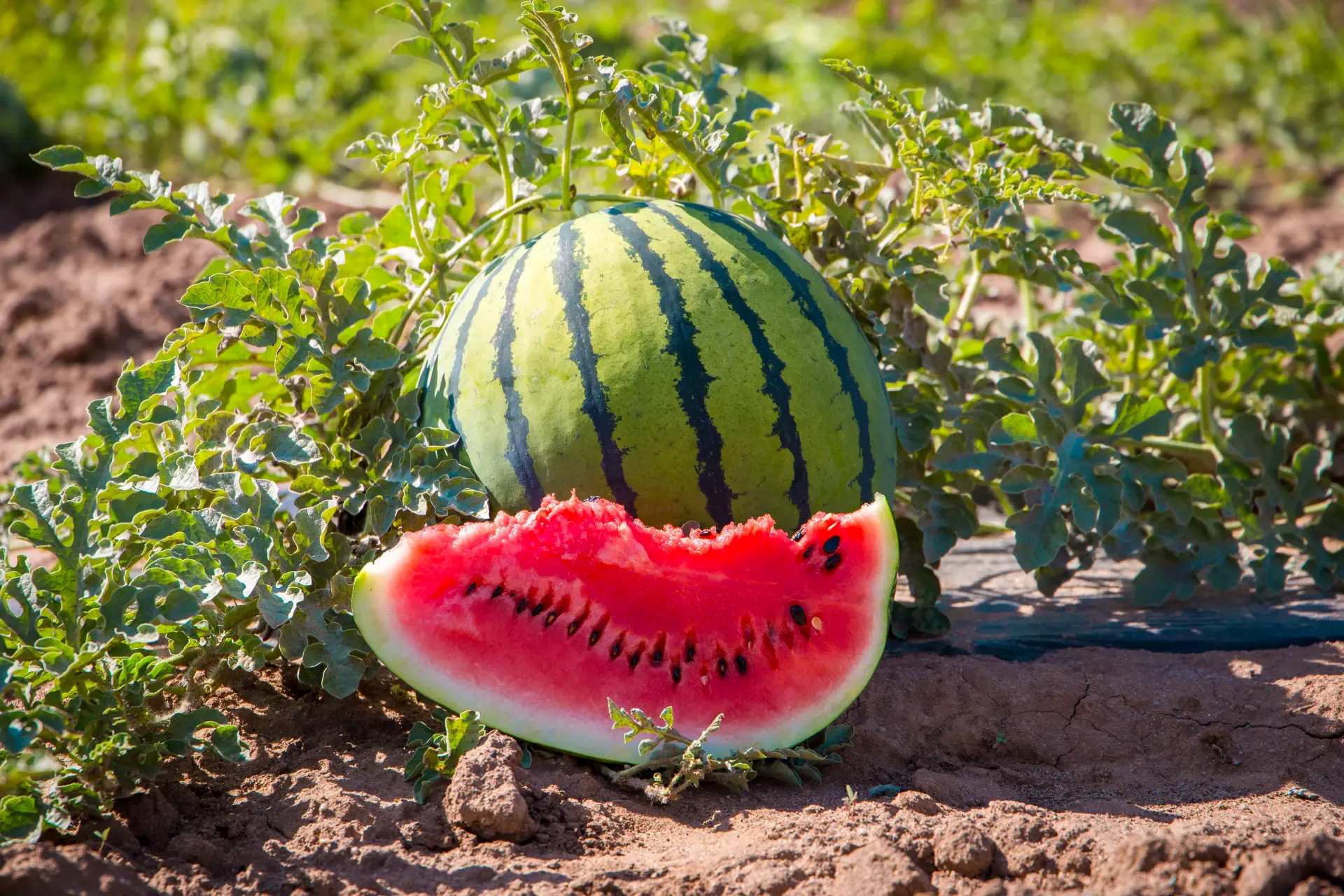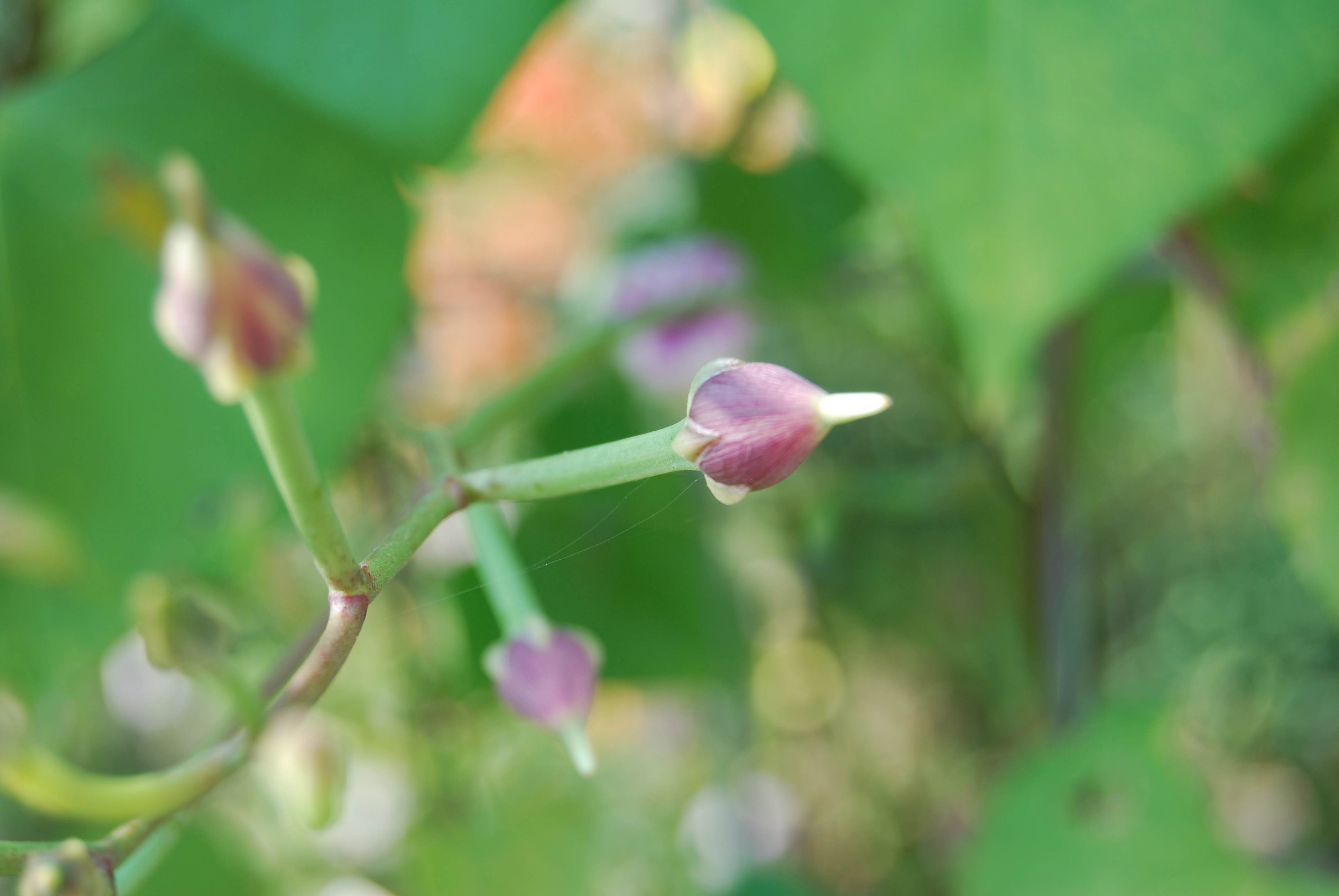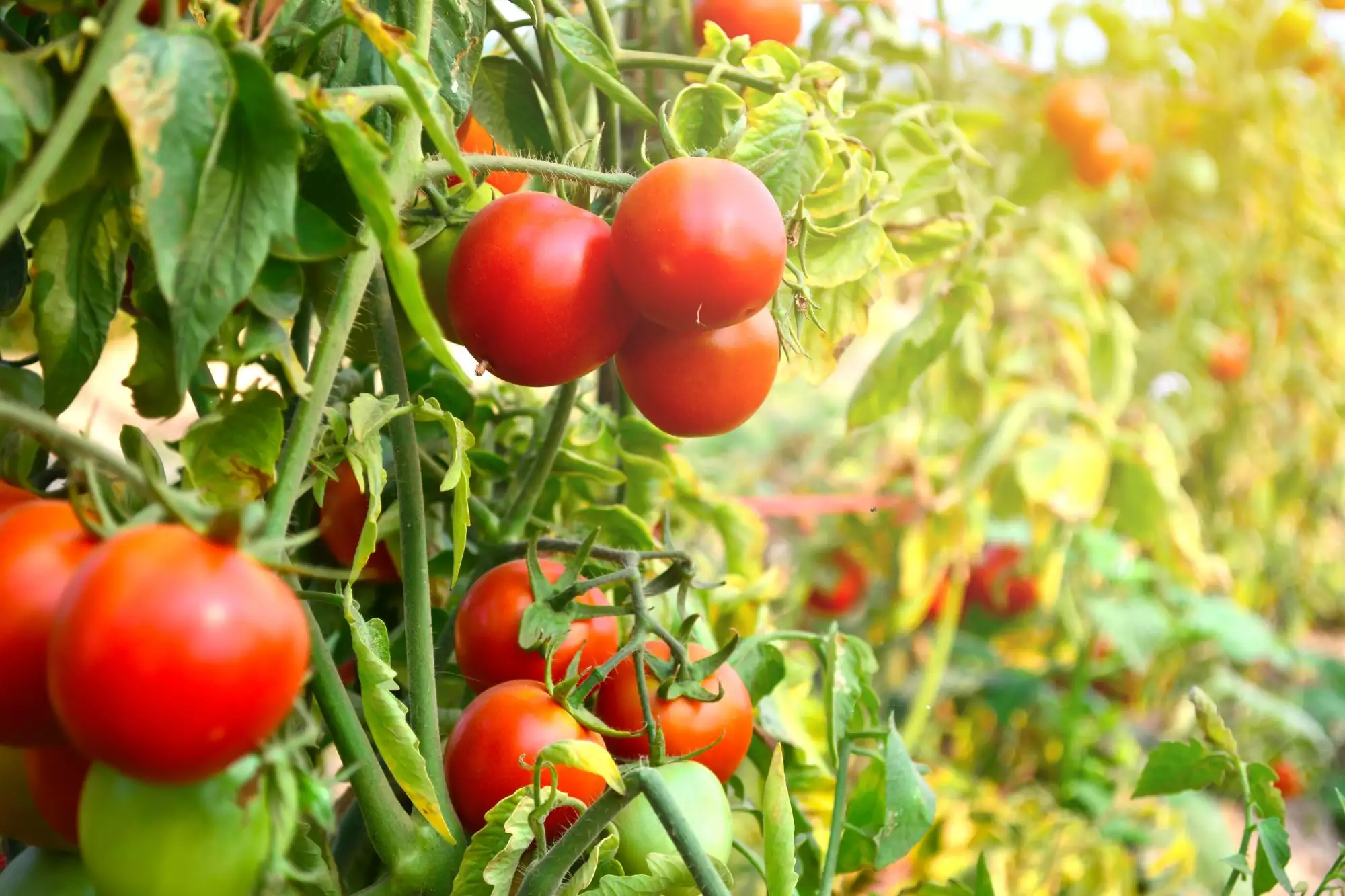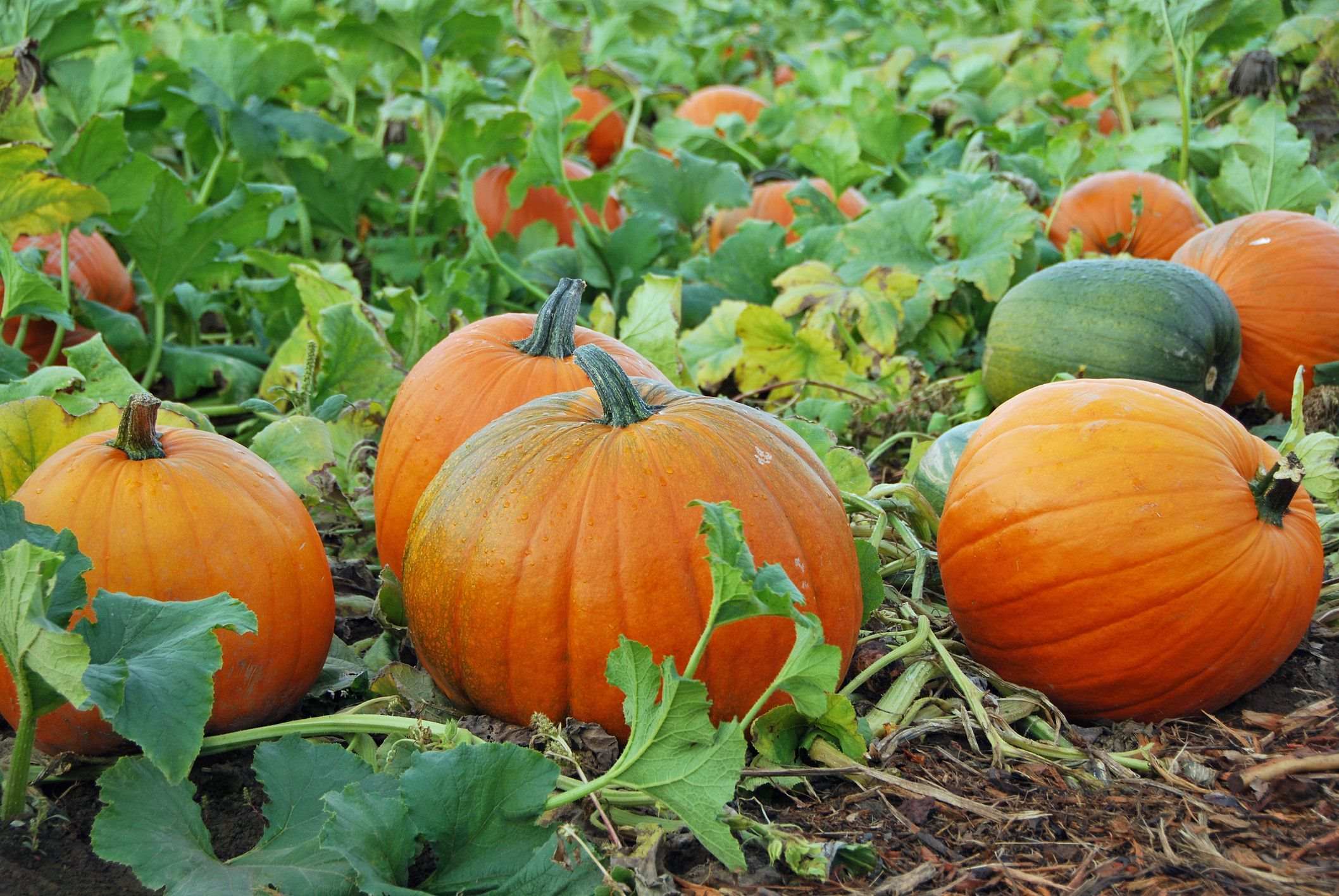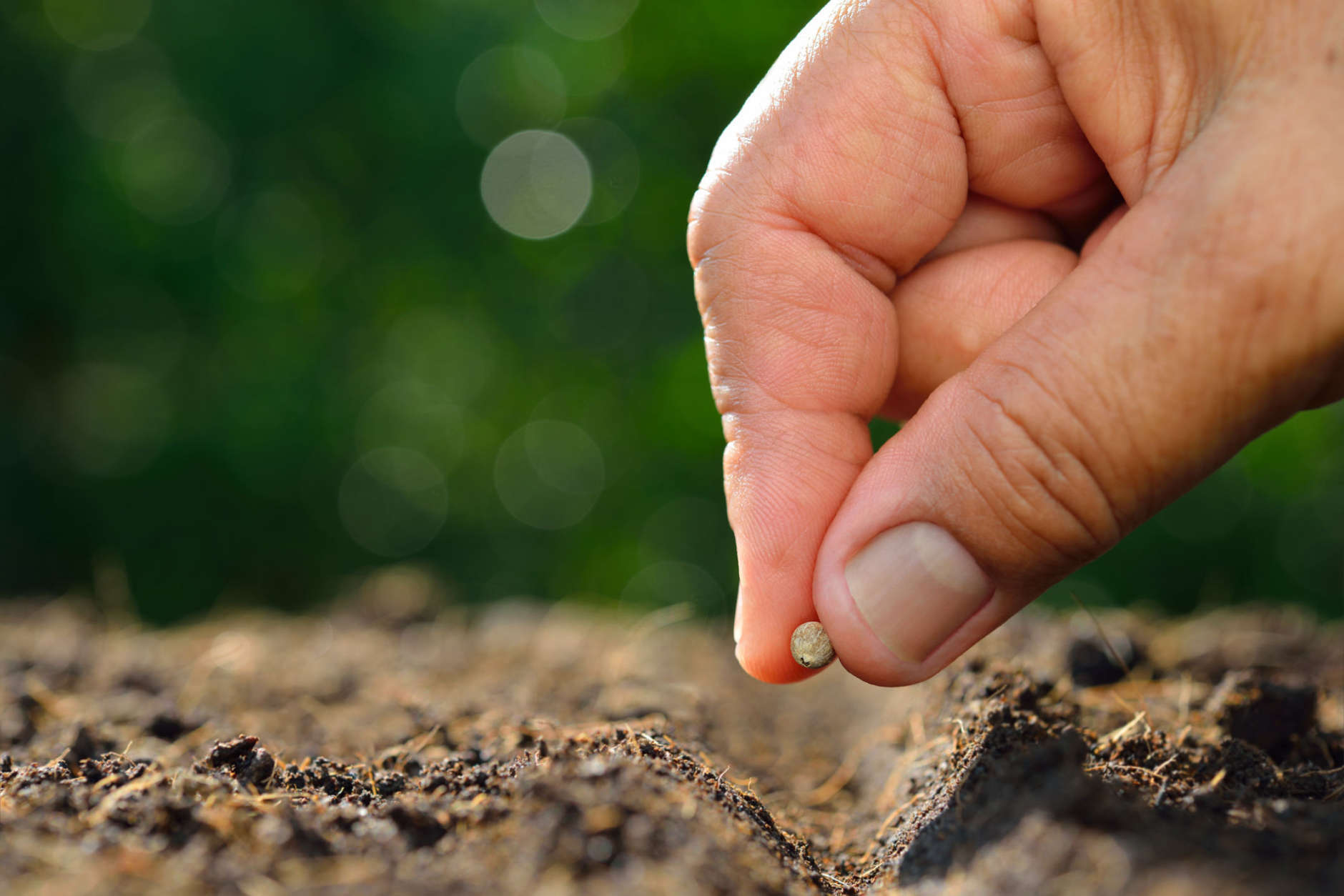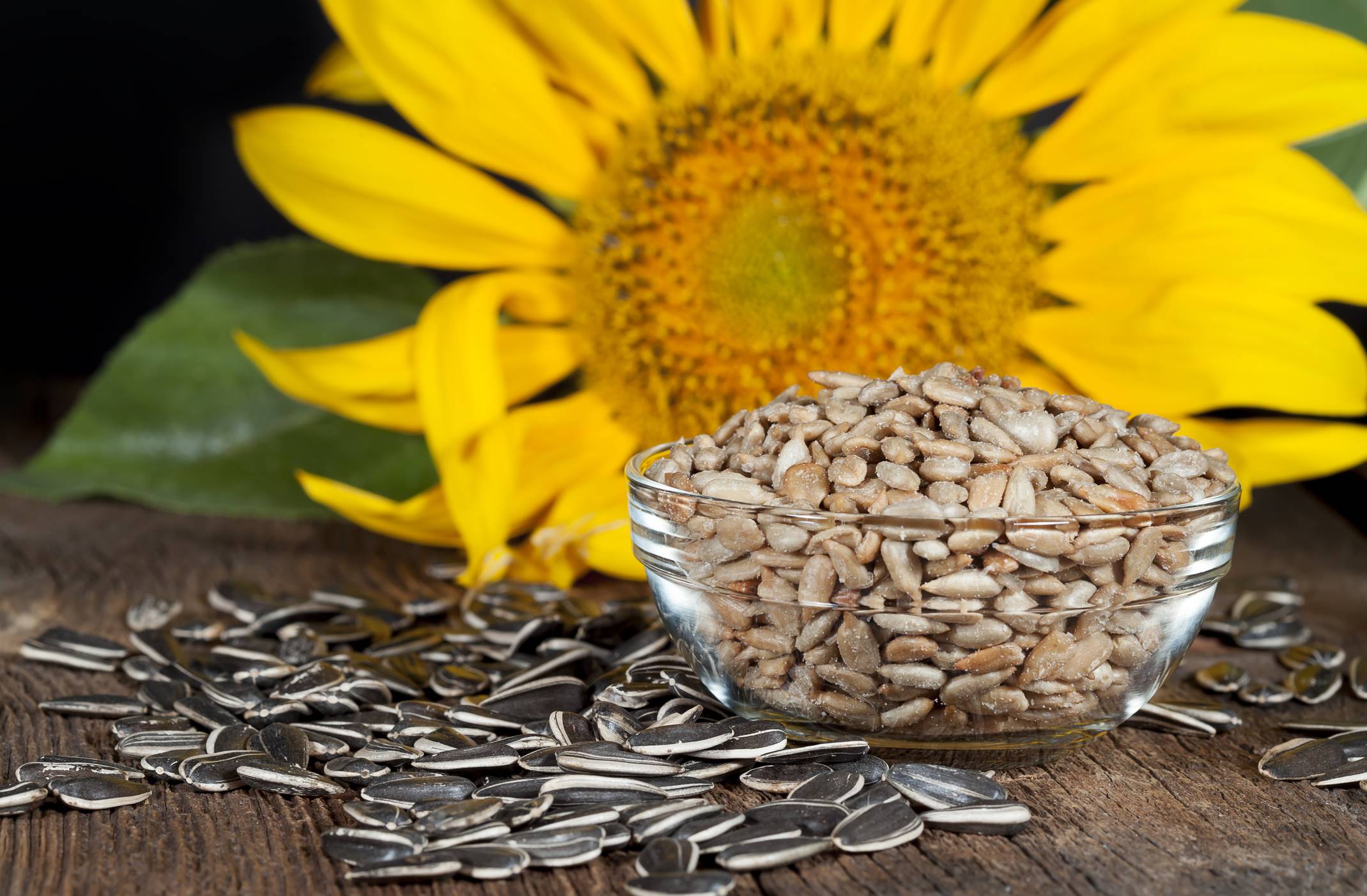Home>Types of Gardening>Ornamental Gardening>When To Plant Columbine Seeds
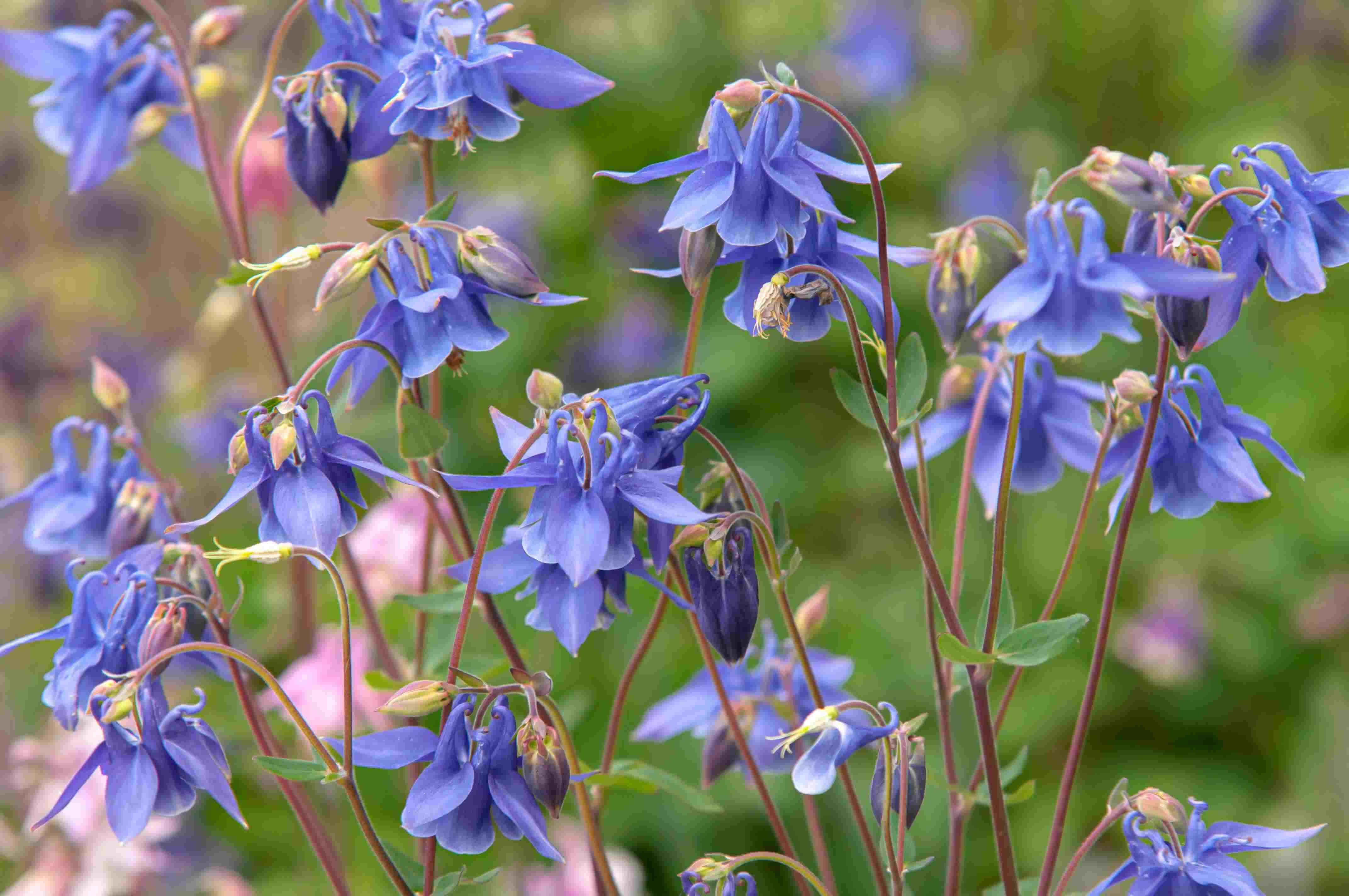

Ornamental Gardening
When To Plant Columbine Seeds
Modified: January 22, 2024
Looking to grow Columbine seeds? Discover the best time to plant them for successful ornamental gardening.
(Many of the links in this article redirect to a specific reviewed product. Your purchase of these products through affiliate links helps to generate commission for Chicagolandgardening.com, at no extra cost. Learn more)
Table of Contents
Introduction
Welcome to the world of ornamental gardening, where beauty blooms and nature flourishes. If you have a passion for vibrant flowers and want to add a touch of elegance to your garden, then columbine plants are a perfect choice. These remarkable plants are known for their exquisite flowers and delicate foliage, making them a favorite amongst garden enthusiasts.
Native to North America, columbine plants belong to the genus Aquilegia and are a member of the Ranunculaceae family. They come in a variety of colors, including shades of blue, purple, pink, yellow, and white, making them a versatile addition to any garden landscape. The unique shape of their flowers, resembling a bell or a spur, adds an enchanting element to their overall allure.
Not only do columbine plants enhance the visual appeal of your garden, but they are also beneficial for attracting pollinators such as hummingbirds, bees, and butterflies. Their nectar-rich flowers act as a magnet, inviting these beautiful creatures to grace your garden with their presence.
In this article, we will explore everything you need to know about growing columbine plants from seeds. From understanding the characteristics of columbine seeds to determining the best time for planting and caring for the plants, we’ll provide you with all the information you need to cultivate a flourishing columbine garden.
Understanding Columbine Seeds
Before diving into the process of planting columbine seeds, it is essential to have a good understanding of these tiny powerhouses of life. Columbine seeds are small, oval-shaped structures that contain the genetic information required for the growth and development of the columbine plant. They are formed as a result of pollination, where pollen from the male reproductive organs of one flower is transferred to the female reproductive organs of another.
Once fertilized, the flowers produce seed pods that contain the mature columbine seeds. These seeds are encased in a protective outer shell, which helps them survive in various environmental conditions. The seeds may vary in color, ranging from black to brown, depending on the specific columbine varieties.
It is important to note that not all columbine seeds are the same. There are different cultivars and species of columbine, each with its own unique characteristics. Some columbine seeds may require stratification, which is a process of exposing the seeds to cold temperatures to simulate winter conditions and break their natural dormancy. This improves the germination rate and ensures successful seedling development.
When it comes to purchasing columbine seeds, there are several options available. You can find them at local nurseries, garden centers, or online seed suppliers. It’s always a good idea to choose reputable sources to ensure the quality and viability of the seeds.
Now that we have a basic understanding of columbine seeds, let’s explore the factors to consider before planting them and ensure the best chance of success in growing these charming plants.
Factors to Consider Before Planting Columbine Seeds
Before embarking on your columbine seed planting journey, there are a few key factors to consider to ensure optimal growth and development of your columbine plants:
- Climate: Columbines are adaptable plants but thrive best in cool to moderate climates. They prefer regions with mild summers and cool winters. Check your USDA hardiness zone to determine if your climate is suitable for growing columbines.
- Soil Quality: Columbines prefer well-drained soil with a slightly acidic to neutral pH level. Soil that is rich in organic matter and loamy in texture is ideal. Consider conducting a soil test to determine if any amendments are necessary.
- Light Requirements: For optimal growth, columbines need a balance between sun and shade. They prefer partial shade or filtered sunlight, especially in regions with hot summers. Too much direct sunlight can scorch the delicate foliage and flowers.
- Watering Needs: Columbines prefer moist soil but are susceptible to root rot if the soil becomes oversaturated. Avoid overwatering and ensure proper drainage to maintain the perfect moisture balance.
- Spacing: Provide enough space between columbine plants to allow for proper air circulation and prevent overcrowding. This will help minimize the risk of diseases and promote healthy growth.
- Pest and Disease Resistance: While columbines are generally resilient plants, some varieties may be more resistant to pests and diseases than others. Research and choose columbine varieties that are known for their resistance to common pests such as aphids and diseases like powdery mildew.
Considering these factors before planting your columbine seeds will lay a strong foundation for successful growth and a thriving columbine garden. In the next section, we will explore the best time to plant your columbine seeds to ensure ideal conditions for germination and establishment.
Best Time to Plant Columbine Seeds
The timing of planting columbine seeds plays a crucial role in their germination and overall success. Understanding the ideal time to sow your seeds will help you establish healthy columbine plants. Here are some guidelines to consider:
1. Spring or Fall: The best time to plant columbine seeds is typically in the spring or fall. These seasons provide mild temperatures and optimal conditions for seed germination and seedling establishment. Avoid planting seeds during the extreme heat of summer or the freezing temperatures of winter.
2. Outdoor Planting Time: In areas with a longer growing season, you can directly sow columbine seeds outdoors in early spring or late fall. Prepare the soil by removing any weeds and incorporating organic matter. Sow the seeds at a depth of about ¼ inch and cover lightly with soil. Keep the soil consistently moist until germination occurs.
3. Indoor Starting: If you live in a region with a shorter growing season, starting columbine seeds indoors is a great option. Begin the indoor planting process about 10 to 12 weeks before the last expected frost date in your area. Fill seed trays or pots with a good quality seed-starting mix, sow the seeds on the surface, and mist the soil gently to provide moisture. Place the containers in a warm location with indirect sunlight. Once the seeds germinate and the seedlings develop a few sets of true leaves, you can transplant them into larger pots or directly into the garden.
Regardless of whether you choose to sow columbine seeds outdoors or indoors, it’s important to provide consistent moisture and proper care during the germination and early growth stages. Be patient, as columbine seeds can take up to four weeks to germinate.
By planting columbine seeds at the right time, you increase the chances of successful establishment and a vibrant columbine garden. In the next section, we will discuss the step-by-step process of planting columbine seeds to ensure you have all the knowledge needed to get started.
Steps to Plant Columbine Seeds
Planting columbine seeds doesn’t have to be complicated. By following a few simple steps, you can ensure that your seeds have the best chance of germinating and growing into beautiful columbine plants. Here’s a step-by-step guide:
1. Prepare the Soil: Choose a well-draining location with partial shade or filtered sunlight for your columbine plants. Prepare the soil by removing weeds, rocks, and debris. Loosen the soil to a depth of at least 6 inches and incorporate organic matter like compost to improve the overall fertility and drainage.
2. Sow the Seeds: Whether planting outdoors or indoors, sow the columbine seeds at a depth of about ¼ inch. If planting multiple seeds, space them at least 12 to 18 inches apart to allow room for growth and airflow. Lightly cover the seeds with soil and gently press down to ensure good seed-to-soil contact.
3. Water Regularly: After planting the seeds, water thoroughly and keep the soil consistently moist. Avoid overwatering, as it can lead to root rot. Monitor the moisture levels, especially during hot and dry periods, and adjust your watering accordingly.
4. Provide Mulch: Apply a layer of organic mulch around the planted seeds to help retain moisture and suppress weed growth. Mulch also acts as an insulator, protecting the young seedlings from extreme temperature fluctuations.
5. Monitor Germination: Columbine seeds can take anywhere from two to four weeks to germinate. Keep a close eye on the planting area and look for signs of new growth. Once the seedlings appear, thin them out if necessary, leaving the strongest and healthiest plants with adequate spacing to grow.
6. Transplant as Needed: If you started columbine seeds indoors, transplant the seedlings into larger pots or the garden once they have developed a few sets of true leaves. Handle the delicate seedlings with care to avoid damaging the roots. Dig a hole large enough to accommodate the root ball, gently place the seedling in the hole, and backfill with soil.
7. Provide Ongoing Care: Once your columbine plants are established, continue to provide proper care. Water consistently, especially during dry spells, but be mindful not to overwater. Remove any weeds that may compete with the plants for nutrients. Apply a balanced fertilizer according to the package instructions to promote healthy growth and bloom.
By following these steps, you’ll be well on your way to growing your own stunning columbine garden. In the next section, we’ll discuss essential tips for caring for your columbine plants as they mature.
Caring for Columbine Plants
Columbine plants are relatively low-maintenance and can bring beauty to your garden with minimal effort. However, a little care can go a long way in ensuring the health and longevity of your columbine plants. Here are some essential tips to keep in mind:
1. Watering: While columbines prefer moist soil, they are susceptible to root rot if overwatered. Water deeply and thoroughly when the top inch of soil feels dry. Avoid overhead watering and instead direct the water at the base of the plant to prevent wetting the foliage, which can lead to disease.
2. Fertilizing: Columbines generally do not require heavy feeding. However, you can apply a balanced slow-release fertilizer in early spring to provide a nutrient boost. Follow the package instructions and avoid excessive fertilization, which can lead to leggy growth and reduced flowering.
3. Pruning: Regular deadheading, which involves removing spent flowers, will encourage prolonged blooming and prevent self-seeding. Additionally, trim back any brown or damaged foliage to maintain a neat appearance and promote healthy growth.
4. Support: Some columbine varieties may require staking or support as they grow taller. Place stakes or a trellis near the plants and gently tie the stems to provide stability, especially in windy conditions. This will prevent the plants from bending or breaking.
5. Pest and Disease Control: Columbines are generally resistant to pests and diseases, but they can occasionally encounter issues such as aphids or powdery mildew. Monitor your plants regularly and take prompt action if you notice any signs of infestation or disease. Use organic pest control methods or consult with a local gardening expert for suitable remedies.
6. Dividing and Propagation: Over time, columbine plants can become crowded and may benefit from division. Divide the plants in early spring before new growth appears. Gently lift the clumps and separate them, making sure each division has healthy roots. Replant the divisions in prepared soil, water thoroughly, and provide proper care as they establish.
With these care tips, your columbine plants will thrive and continue to enchant your garden with their delightful blooms. However, it’s essential to be aware of common issues that can arise with columbine plants. In the next section, we’ll discuss troubleshooting these issues to keep your columbines in optimal health.
Troubleshooting Common Issues with Columbine Plants
While columbine plants are generally resilient, they can still encounter a few common issues. Understanding these problems and knowing how to address them will help ensure the continued health and vitality of your columbine plants. Here are some common issues you may encounter and their potential solutions:
1. Aphid Infestation: Aphids are tiny insects that feed on the sap of columbine plants, causing distorted growth and yellowing leaves. To combat aphid infestations, you can spray a solution of soapy water or use an organic insecticidal soap. Alternatively, attracting natural predators like ladybugs and lacewings can help control aphid populations.
2. Powdery Mildew: Powdery mildew is a fungal disease that appears as a white or gray powdery coating on the leaves and stems of columbines. To prevent powdery mildew, ensure good air circulation around the plants by providing adequate spacing. Remove infected plant parts and avoid overhead watering. Applying a fungicide labeled for powdery mildew can also help control the disease.
3. Yellowing Leaves: Yellowing leaves can be caused by a variety of factors, including nutrient deficiencies, overwatering, or poor drainage. Check the soil moisture levels and adjust watering accordingly. If the leaves continue to yellow, consider applying a balanced fertilizer or amending the soil with organic matter to address any potential nutrient issues.
4. Wilting or Drooping: Wilting or drooping columbine plants may indicate underwatering or root rot. Check the soil moisture levels and adjust watering as needed. If the problem persists, check the roots for signs of rot or damage. If root rot is present, consider improving the soil drainage or replanting in a more suitable location.
5. Self-Seeding: While columbine self-seeding can be desirable in some cases, it can lead to overcrowding and reduced overall vigor. To control self-seeding, deadhead the flowers before they go to seed. Alternatively, you can collect the seeds and store them for controlled propagation or share them with other gardening enthusiasts.
6. Deformed Flowers: Deformed flowers can occur due to various factors, including pests, diseases, and environmental stressors. Ensure proper care, including regular watering, adequate sunlight, and proper nutrition, to minimize the risk of deformed flowers. Address pests or diseases promptly using appropriate treatments.
By understanding and addressing these common issues, you can ensure the continued health and beauty of your columbine plants. Remember to observe your plants regularly, provide proper care, and seek help from local gardening experts if needed. In the next section, we’ll wrap up our guide with a summary of the key points discussed.
Conclusion
Congratulations! You are now equipped with the knowledge and understanding to successfully grow and care for columbine plants. These beautiful flowers will add a touch of elegance and color to any garden. By considering factors such as climate, soil quality, and light requirements, you can create an ideal environment for your columbine plants to thrive.
We explored the best time to plant columbine seeds, whether it’s directly in the garden or by starting them indoors. Following the step-by-step process of planting seeds ensures proper germination and establishment of healthy seedlings. Additionally, we discussed essential care tips, including proper watering, pruning, and fertilizing, to maintain the health and vitality of your columbine plants.
It’s important to keep an eye out for common issues like aphid infestations, powdery mildew, and yellowing leaves. By troubleshooting these problems promptly and implementing appropriate solutions, you can prevent further damage and ensure the long-term success of your columbine garden.
Now, armed with this knowledge, it’s time to put your green thumb to work and create a stunning columbine garden. The beauty and charm of these unique flowers will not only delight you but also attract pollinators, adding life and vibrancy to your outdoor space.
Remember to enjoy the process of gardening and take pleasure in watching your columbine plants grow and flourish. Happy gardening!
